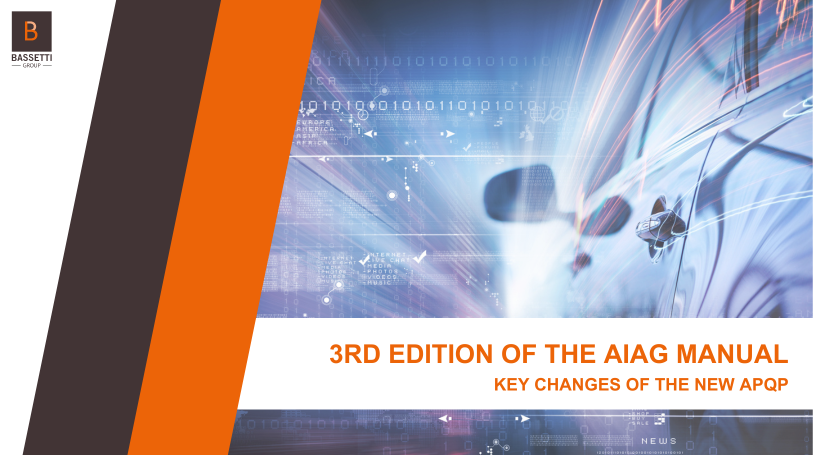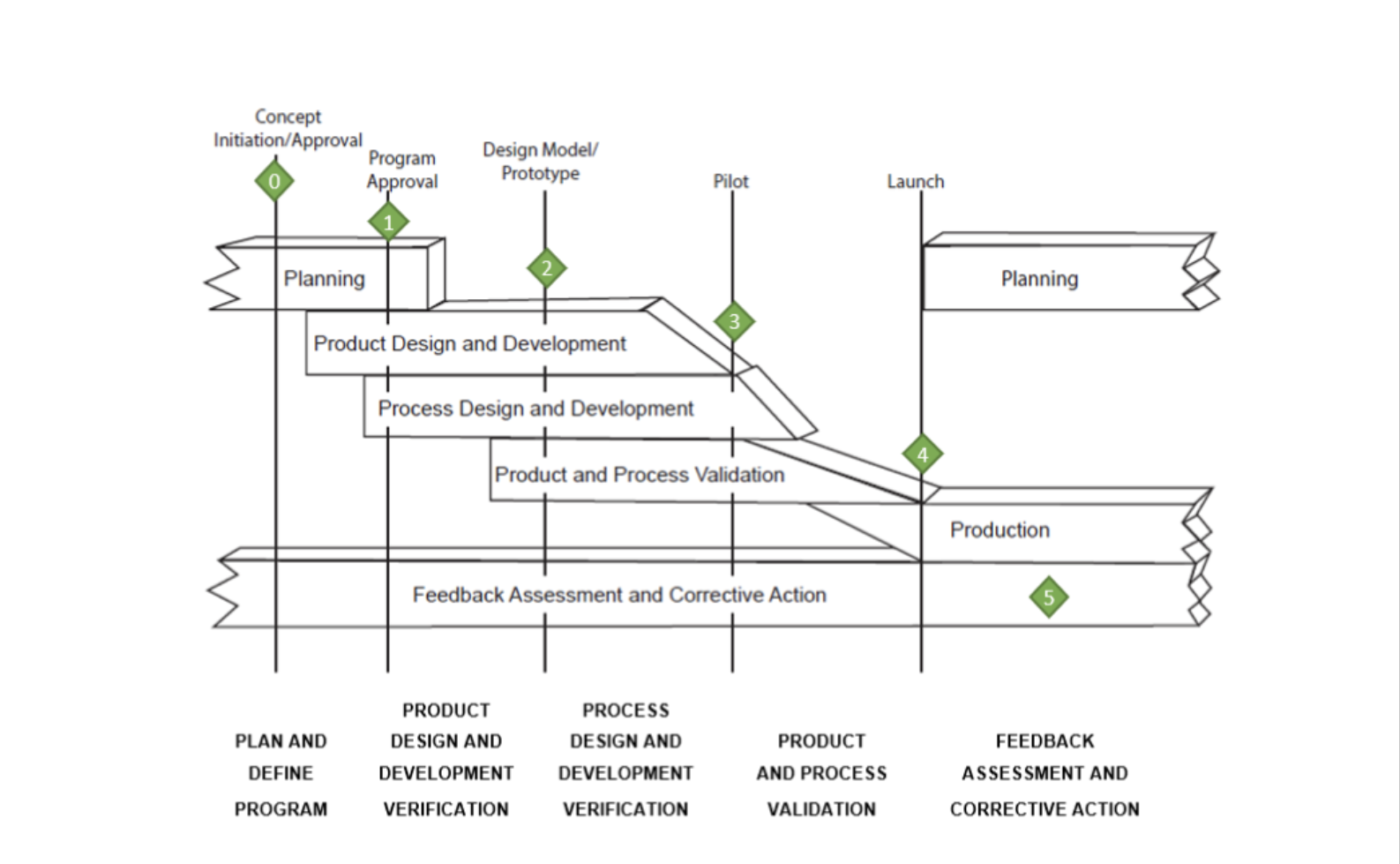A third edition of the APQP approach according to AIAG (Automotive International Action Group) was released in March 2024. This new publication has become the standard for the automotive industry.
Here are the main new features to help you understand how to update your methodology, from the 2nd to the 3rd edition.

Advanced Product Quality Planning (APQP) is a methodology designed to guarantee quality and customer satisfaction while minimizing risks and optimizing development and production processes.
It is broken down into several phases to facilitate risk management and quality control at every stage. It also enables effective coordination of efforts between different teams, regular monitoring and the integration of feedback for continuous improvement.
These phases are as follows:
1- Planning and Program Definition :
Understand customer needs and define product objectives.
2- Product Design and Development :
Create and test product concepts while identifying and solving potential problems.
3- Process Design and Development :
Plan how the product will be manufactured efficiently and reliably.
4- Product and Process Validation :
Test the product and processes to ensure they work as intended before mass production.
5- Production, Feedback, Evaluation and Corrective Actions :
Launch production, monitor quality, gather feedback and implement corrective actions to ensure continuous improvement.
Various deliverables (or core tools) are planned for these phases to guarantee complete documentation of the development and production process at the end of the project.

The latest edition of the APQP methodology dates back to 2008. In the meantime, many changes have taken place in the automotive industry, in industrialization, methods and components. So it’s important to have a standard that also evolves.
All core tools have been reviewed and updated to bring them more in line with current industry practices. These main changes are detailed in the second part.
In addition, the surveillance plan (or control plan) is now considered as a core tool in its entirety. It has been separated from the overall APQP approach with a view to continuous improvement, so that it can be developed without revising the entire APQP methodology. This will enable more frequent updates to keep pace with industry developments. This division does not detract from the logical place of the control plan within the core tools as a whole, but it does underline its importance. It follows on from the FMEA.
This new standard focuses on 2 main areas: management and sourcing and suppliers.
a)Management
Although the technical side of APQP is now well under control, the latest standards lacked a managerial side.
In fact, it’s important to use stage-gate management to initiate and conclude each phase of the APQP. Each gate acts as a checkpoint to ensure that the objectives of the current stage are achieved before moving on to the next.
This new version includes points of attention on risk assessment, new checklists to help validate the 5 phases, and new indicators to monitor.
As a result, the checklists for each gate were reviewed and an initial project launch checklist (Gate 0) was put in place.
When creating a new project, it’s important to take the time to assess the risks and the metrics to be tracked, so that you can be alerted as early as possible in the event of any slippage, and thus have an impact on the entire schedule.
APQP metrics are the key to this new version: Completing an APQP without meeting deadlines, specifications and budget, is a sign that the APQP has failed.
b) Sourcing
Suppliers play an important role in the success or failure of this approach. Changes in manufacturing processes, with increasingly complex systems such as the electrification of vehicles, are leading to longer supply chains and much greater interaction between components, and therefore between suppliers.
A new checklist has therefore been released, with over 70 lines concerning suppliers and their monitoring. It is important for organizations to have a method for identifying their highest-risk suppliers.
New players are arriving in the automotive world, as well as new processes, new methods… It’s important to be able to apply the right APQP methodology.
The new standard thus makes it possible to focus new attention points on management, with risk management, monitoring of precise indicators and sourcing, with supplier evaluation.
What’s more, as part of our drive for continuous improvement and consistency, the control plan has become a core tool in its own right.
As a reminder, the main core tools are as follows:
Find out more about TEEXMA for Quality please do not hesitate to contact us: